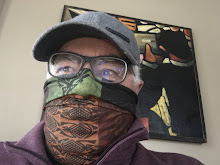
TONTO National Monument March 2007
In the alcoves the Salado built structures from siltstone rock that littered the caves, and plastered their buildings with mud. Archeological excavation of Salado cliff dwellings in Tonto

Around A.D. 1150, the Salado culture, named for its dependence on the nearby Rio Salado, or Salt River, took hold in the Arizona valley now known as the Tonto Basin, where Tonto Creek joins the Salt River.
The Salado culture combined customs and characteristics of several American Indian groups who lived in the area, such as the Mogollon. Like the Hohokam people, the Salado channeled the river's waters to create farmland in the desert. They built Pueblo-style buildings. The Salado left no written records.
Archeologists calculate that the first American Indians passed through the Tonto Basin as early as 3500 B.C. Archeological evidence indicates that by the late 8th century, members of the Hohokam culture lived here in permanent pit house settlements.
As the population grew, people organized irrigation districts along the Salt River. Each district was responsible for the ditches, fields, and crops along a few miles of the river. District activity was centered at structures that have come to be called "platform mounds," because masonry structures were built atop man-made hills. Although some are now probably below Roosevelt Lake, the ruins of platform mounds are still scattered along the length of both the Salt River and Tonto Creek in Tonto Basin.
By 1300 the growing population and shrinking amount of resources pushed the Salado people to spread throughout the region. Some Salado moved from the valley floor and settled in the hillsides, a few soaring 2,000 feet high. Others built settlements on plateaus and in shallow caves above Tonto Basin.
In the alcoves the Salado built structures from siltstone rock that littered the caves, and plastered their buildings with mud. Archeological excavation of Salado cliff dwellings in Tonto
Dwellings on a cliff high above the Tonto Basin, ruins now known as the Upper Cliff Dwelling consisted of 32 ground floor rooms, eight of which had a second story. Archeologists think that the Salado used terraces and rooftops of the structures for work and recreation. Debris from ancient fires tell us that fire pits were dug into the floors. The Lower Cliff Dwelling included 16 ground floor rooms, three of which were two story structures. Ladders and hatchways in the ceilings provided access to the second stories and rooftops. Based on the artifacts found in certain areas, archeologists determined that some rooms were used as living space, while others were work rooms where people ground grain and other plant products. Still other rooms were storage rooms and held surplus food and various tools.
The Salado knew and used their surroundings well. They learned to cultivate crops in small patches of fertile land on the craggy hillsides. They collected rain water for later use.
The presence of seashells commonly found in California and feathers from Mexico suggest that the Salado may have been part of an expansive trade network exchanging goods and technological ideas from what is now Colorado to the Pacific shore. Burial practices and cremations of the Salado, similar to those found in cemeteries of other groups, provide additional evidence of the exchange of goods and ideas with various native tribes. The Salado population grew as people migrating from surrounding areas joined the community. They incorporated features of their own lifestyle, creating the unique Salado culture.
Experts widely agree that the Salado walked away from their cliff dwellings sometime around A.D. 1450. By this time, the population had grown so large that demand and overuse led to a scarcity of resources, and the quality of life declined. Internal strife, drought, and disease are other likely factors that caused the Salado to abandon their lofty homes. While experts believe they know why the Salado left, no one knows for certain where they went. It is widely agreed, and archeological research supports the theory that the Salado dispersed into smaller groups. It is thought that some Salado returned to a way of life based on hunting and gathering food, while others joined various settled cultural groups. Still others, it is believed, formed their own agricultural communities. Additional archeological investigations may provide more clues.Ruins DiscoveredRugged natural terrain, remoteness and natural camouflage isolated and protected the Salado cliff dwellings until the mid-1870s when ranchers, soldiers, adventurers and settlers found their way into the Tonto Basin.


1 comment:
You really should read 1491 if you haven't already.
Post a Comment